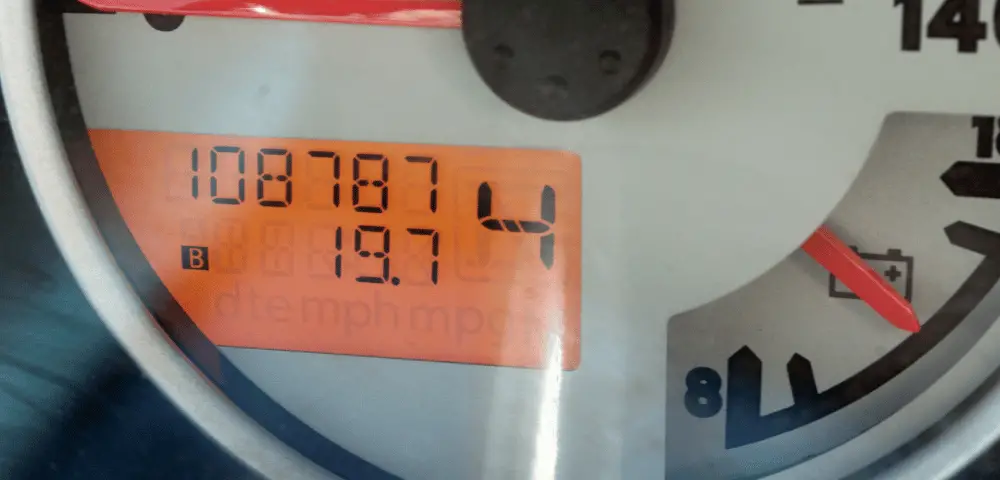You might have seen many vehicles standing out because of larger wheels. They look amazing and might even tempt you to get one for yourself as well.
However, you might have also heard that it costs a lot in terms of fuel efficiency.
Is that really the case?
If so, what are the main factors that affect the vehicle’s fuel efficiency of the car? The following text will take a detailed look at the effect of tire size on fuel economy.
The Relationship between Tires and Fuel Economy
In the simplest terms, the general notion that larger tires have a negative effect on fuel economy is true.
The primary reason behind it is the weight. Bigger tires naturally weigh more, which means that the engine has to exert more power to move around, and that more fuel for the car.
However, that is not the only factor to consider.
The fact is that tires are responsible for a maximum of 30% difference in fuel consumption.
The rest of the factors are related to other factors like the engine condition, driving habits, terrain, etc.
Nevertheless, 30% is a huge number and can make a significant difference in the fuel economy of a vehicle.
That’s why it’s crucial to ensure that everything regarding the tires remains in perfect condition for the best overall performance of the vehicle.
The Overall Effect of Tire Size on Gas Mileage
As stated before, tire size is an essential performance parameter that can significantly affect a car’s fuel efficiency.
There are several ways in which tire size can impact fuel efficiency.
For instance, rolling resistance, weight, contact area, and aerodynamics.
Understanding these factors can help car owners make informed decisions about tire size, and help them maximize gas mileage and reduce fuel costs.
All these factors are directly influenced by the size of the tire. Let’s take a brief look at how they affect fuel consumption.
1. Rolling Resistance
Rolling resistance is one of the most important factors that affect tire size and fuel efficiency.
Rolling resistance is the force that opposes the forward motion of a tire, and it can be influenced by various factors, including tire size, tread pattern, and inflation pressure.
Larger tires generally have a larger contact patch with the road, which creates more friction and resistance and therefore reduces fuel efficiency.
Naturally, it means that greater weight means increased rolling resistance for the tire and the car would consume more fuel to overcome all that.
This means that, as tire size increases, the engine has to work harder to overcome the increased rolling resistance, which would consume more fuel.
2. Weight
Another important factor that affects fuel efficiency is weight. Larger tires are generally heavier, and this increased weight affects fuel economy.
The primary reason behind it is the fact that your engine has to work harder to move the heavier vehicle, which requires more fuel.
Moreover, the extra weight can also put a lot more stress on the engine, transmission, suspension, and other integral parts.
All of this leads to additional wear and tear, which can significantly reduce the performance and longevity of the vehicle.
3. Contact Area
Another important parameter that increases with the tire size is its contact area with the road.
Whenever we talk about contact, we’ll always mention friction, which is one of the primary reasons behind the increased fuel consumption of any car.
Furthermore, larger tires also lead to traction.
Generally, traction is welcome as it allows drivers to maintain a grip on the car. However, too much of it can make the car harder to move and resultingly affect fuel efficiency.
4. Aerodynamics
Aerodynamics is another important factor that affects tire size and fuel efficiency.
The shape and size of a tire can impact the airflow around a vehicle, and this can affect fuel efficiency.
A larger tire can increase the drag on a vehicle, which requires the engine to work harder to overcome the increased resistance.
This, in turn, reduces the vehicle’s fuel economy and can result in reduced speed and acceleration.
Spotlight: The Effect of Tire Pressure on Fuel Efficiency
This is not directly related to the overall size, but it’s crucial to ensure that your tire is inflated properly for the best performance.
Under-inflated tires increase rolling resistance, which reduces fuel efficiency.
In addition, under-inflated tires can also reduce the lifespan of the tires, increase the risk of a blowout, and reduce the overall safety of the vehicle.
Similarly, over-inflated tires can pose several risks to the safety and performance of a vehicle.
It can increase wear and tear, leading to blowout, and reduce the tire’s grip on the road. Thereby making it dangerous for the occupants and the other people on the road.
It’s important to maintain the proper tire inflation pressure, as specified by the vehicle manufacturer, to ensure that the tires are safe and perform at their best.
By avoiding over-inflated tires, car owners can reduce the risk of a blowout, improve ride comfort, and maximize fuel economy.
Key Takeaways
In conclusion, tire size can have a significant impact on a car’s fuel economy, and it is important to choose the right tire size based on the specific needs and driving conditions of a vehicle.
Larger tires can provide better performance and handling, but they also come with a trade-off in terms of gas mileage.
Car owners can maximize gas mileage by choosing the right tire size, maintaining proper tire inflation pressure, and taking into account the other factors that can impact fuel efficiency.
By making informed decisions about tire size, car owners can reduce fuel costs, increase fuel economy, and improve the overall driving experience.


